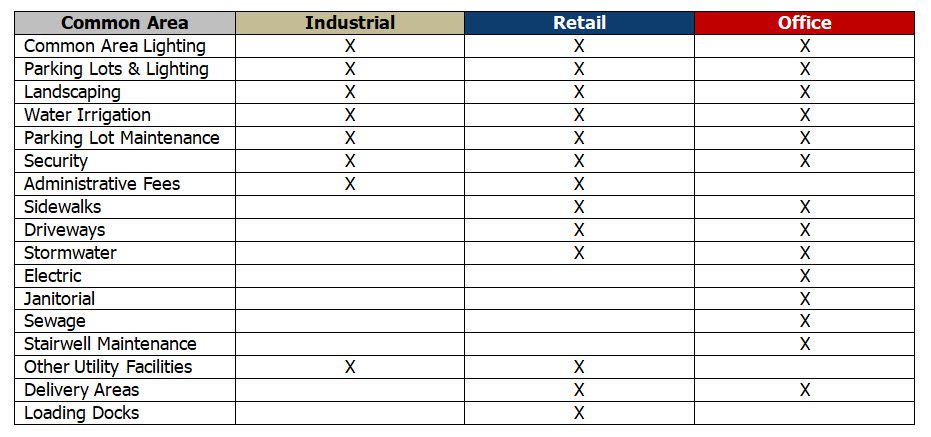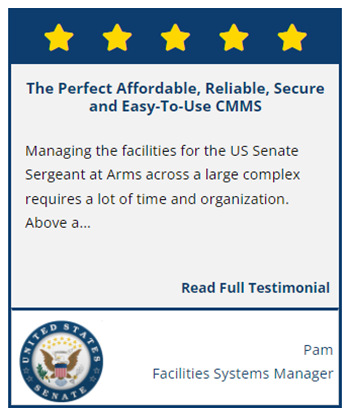 If you’ve never negotiated a lease for your company, the process can be challenging and you’ll likely come across a lot of unfamiliar words. Common area maintenance, or the expenses renters pay in commercial leases for areas that are common to all tenants, is a phrase that frequently baffles tenants.
If you’ve never negotiated a lease for your company, the process can be challenging and you’ll likely come across a lot of unfamiliar words. Common area maintenance, or the expenses renters pay in commercial leases for areas that are common to all tenants, is a phrase that frequently baffles tenants.
What Is Common Area Maintenance?
Common area maintenance is the cost that businesses pay and share with tenants for the upkeep of all “common” or “shared” areas in a commercial building. The usable area and the common area are two distinct areas that are covered by the rent when you lease a commercial building.
Usable Area
The space you are leasing is known as the usable area, or the area of a building that you specifically use as a tenant. This section can include communal restrooms, closets, break rooms, and a reception area in addition to the individual offices or other facilities your business requires.
Common Area
Outside of your leased space, but accessible to you and other tenants, are the common areas of the building. Common restrooms, lobbies, walkways, parking lots, and landscaping are some examples of these spaces. Elevators, electrical rooms, and common hallways can all be found in a multi-story building’s common area.
CAM fees are applied to “require renters to cover the landlord’s direct expenses for “shared spaces.” Some typical examples of common areas by industry include:

Typical Fees in a Common Area
You are responsible for paying the CAM fees, which covers running expenses like snow removal and landscaping as well as maintenance, repairs, and upkeep of these common spaces. The roof, structural components, walkways, and communal facilities are additional common spaces that are covered by CAM fees. Some other expenses covered by CAM fees are security systems or salaries of security personnel, permits, taxes, insurance, or legal fees. You need to check your lease agreement for any additional CAM expenses. Either the tenant or the landlord/property manager is required to cover all of these expenses. Depending on the sort of lease and, more critically, the type of commercial space involved, the costs can vary significantly.
There are three major types of commercial properties, industrial, retail and office.
Industrial CAM Expenses
In comparison to retail or office clients, an industrial tenant’s CAM expenditure statement will have fewer things on it. This is because many of the industrial facilities don’t require the same amenities found in other commercial spaces. Typically CAM expenses for industrial facilities come from common area lighting, landscaping, parking lot/sidewalk/driveway maintenance, loading docks, and delivery areas.
Electrical
Industrial properties have sub-metering since the quantity of electricity that tenants use varies greatly depending on what they do. For instance, a manufacturer and a storage facility have very distinct functions. One may just need electricity for a day or a few hours, while another may run machinery for several days at significant electrical expenditures. This makes electrical costs an individual operating expense rather than a CAM expense, and industrial tenants are therefore required to contract and pay for their own electrical bills.
Janitorial
Because there are no shared common spaces, such as lobbies and restrooms, janitorial is also individually contracted by tenants and is not included in Common Area Maintenance expenses.
Additional Common Areas
Lighting for properties and parking lots, landscaping, parking lot upkeep, and water for irrigation are typical industrial CAM expenses. This is so that everyone who occupies the building shares the benefits of these amenities.
Retail CAM Expenses
Office buildings and retail spaces have a similar breakdown of CAM expenses, with several exceptions:
Electrical
CAM expenses for retail tenants are very similar to those for office tenants. However, there might be a significant difference in electrical demand in retail areas due to the variation in electrical use. As an example, a restaurant will use a lot more electricity than a nearby clothing store. As a result, electrical is not included in CAM and retail centers are sub-metered, and electrical is paid individually by the tenant in retail centers. Property and parking lot illumination are the only exceptions to this rule.
Janitorial
Because there are fewer common areas inside of retail buildings, cleaning is less of a factor. Compared to an office building, there are fewer lobbies and hallways. Janitorial costs are typically not a large component of CAM fees for retail tenants.
Additional Common Areas
Additional common areas with high maintenance expenditures are frequently found in retail buildings. Driveways, loading docks, delivery areas, and sidewalks all see a high volume of foot traffic. and are subject to excessive wear and tear. These maintenance fees make up a large portion of retail CAM expenses.
Office CAM Expenses
Office buildings usually have the widest array of different types of common areas, including lobbies, bathrooms, stairwells, elevators, hallways, and more.
Electrical
Instead of being sub-metered as it is in retail and industrial buildings, electricity is often metered across the entire office building. Office tenants are expected to work a typical forty-hour workweek and use roughly the same amounts of electricity per square foot from tenant to tenant, according to landlords. Because of this, the cost of electrical maintenance is distributed among all tenants according to their respective spaces in the building.
Janitorial
Because there are so many common areas, such as lobbies, corridors, elevators, and restrooms that need to be maintained, janitorial costs are frequently taken into account when calculating CAM costs in office buildings.
Additional Common Areas
Landscaping, parking lots, and administrative fees are also included in CAM expenses because all tenants utilize these shared areas and services
How Does CAM Differ from Operating Expenses?
Operating expenses are the costs of operating the building and include: Utilities, Repairs, Insurance, Property tax, and Management fees, among other things.
Common Area Maintenance is similar but only applies to the cost of running shared features. CAM also doesn’t include insurance or property taxes. As a result, it’s common to hear people refer to your reimbursements as “CAM, Tax, and Insurance,” which is another way of indicating that you’ll be responsible for paying your portion of the building’s total running costs.
Tips For Negotiating CAM Costs
When discussing CAM costs in a commercial lease, some things to keep in mind include extra fees, scope, and depreciation.
Other Charges
A portion of the CAM charges may be charged as an administrative fee by some landlords. This price covers things like payment processing and accounting services. Some people might also include third-party management fees, but they serve a similar purpose.
Clarification of Costs
Are “maintenance” and “replacement” costs included in the CAM fee, and what do they entail? While tenants would contend that replacements are an additional expense, some landlords include them in CAM because they are less expensive than ongoing maintenance.
System Depreciation
Major system replacements, such as an HVAC system replacement, are expenses that the landlord can depreciate, and modernizing these systems increases a property’s marketability. Therefore, it stands to reason that the landlord—not the tenants would benefit from this option.
Why Commercial Leases Have CAM Sections
Adding a CAM section into commercial lease agreements gives the landlord protection from rising and unpredictable costs, which protects their return on investment. Additionally, it gives the landlord financial flexibility in case of unexpected repairs or dealing with other maintenance problems. Repairs become less of an issue if there are CAM fees built into commercial leases.
CAM Impact On Tenants and Landlords
Tenants benefit from landlords’ upkeep of common areas and desire that landlords maintain the building so that tenants can use the space without concern for maintenance. In exchange for their piece of mind, landlords charge common area fees to all residents. From building to building, the specific costs covered by the common area maintenance provision vary, but they should be reasonable.
Tenants frequently have room to bargain for better terms. Make sure to set a limit on operating expenditure growth year over year.
Make sure you comprehend what is covered by the common area maintenance provision in order to put yourself in the best possible position for a fruitful discussion. If you don’t, you can find yourself paying expenses you could have avoided.
As a tenant, make sure you understand the specifics of maintaining the common areas to ensure you’re just paying your fair portion of the costs.
Managing Maintenace Tasks
Curious about how you can keep on top of all of those maintenance tasks and manage them more efficiently? With eWorkOrders CMMS software:
- You can set up preventive maintenance schedules with automatic notifications to the techs.
- Keep detailed and historic records of all of your assets.
- Work Orders can be prioritized to accommodate unexpected emergencies.
- Be prepared for inspections and audits.
- Access to eWorkOrders CMMS from a computer, Smartphone, or mobile device.
- And more..
eWorkOrders streamlines and automates all of your maintenance tasks so that you can get back to concentrating on growing your business.
Speak with one of our account managers and get a free demo!